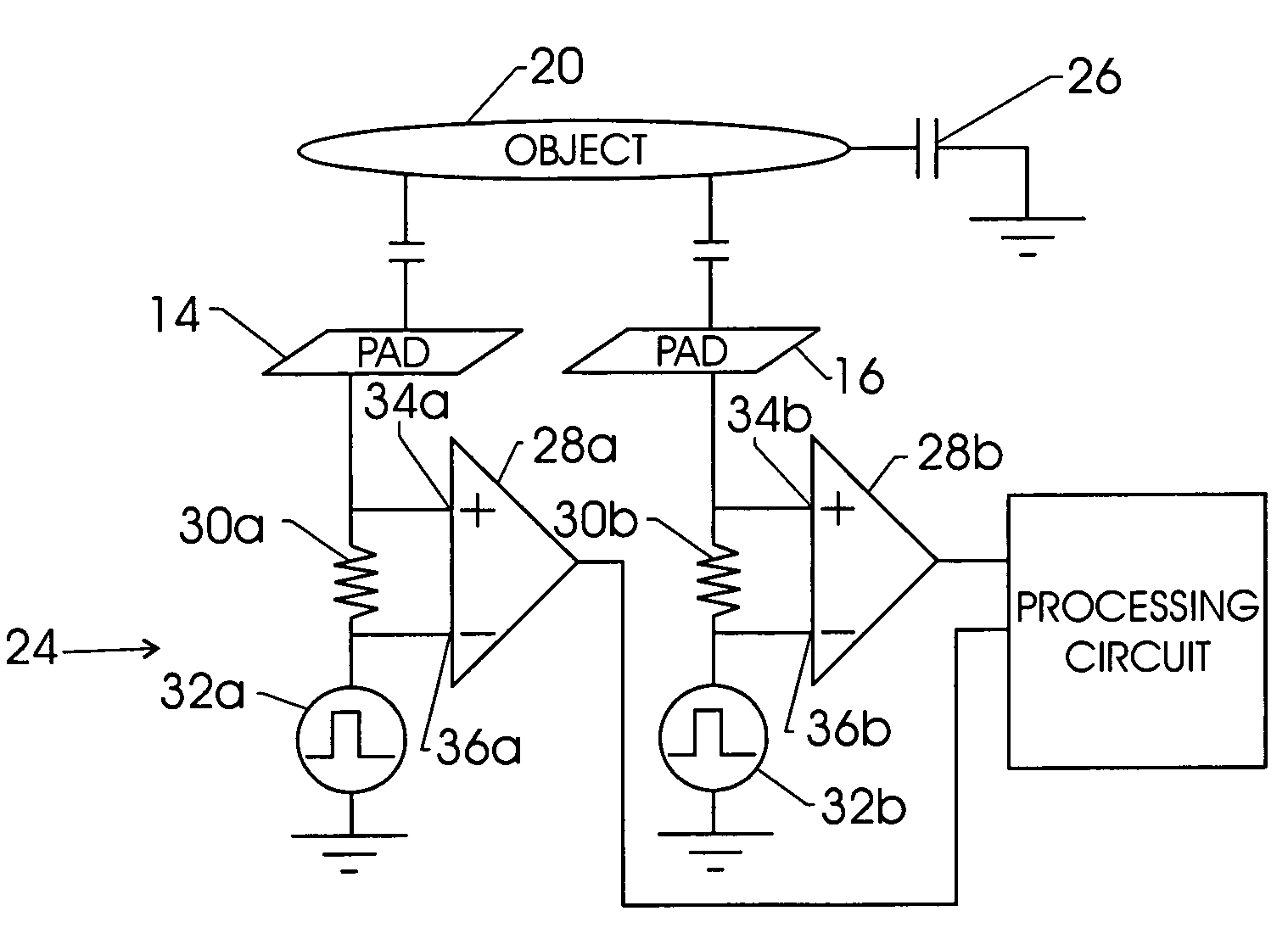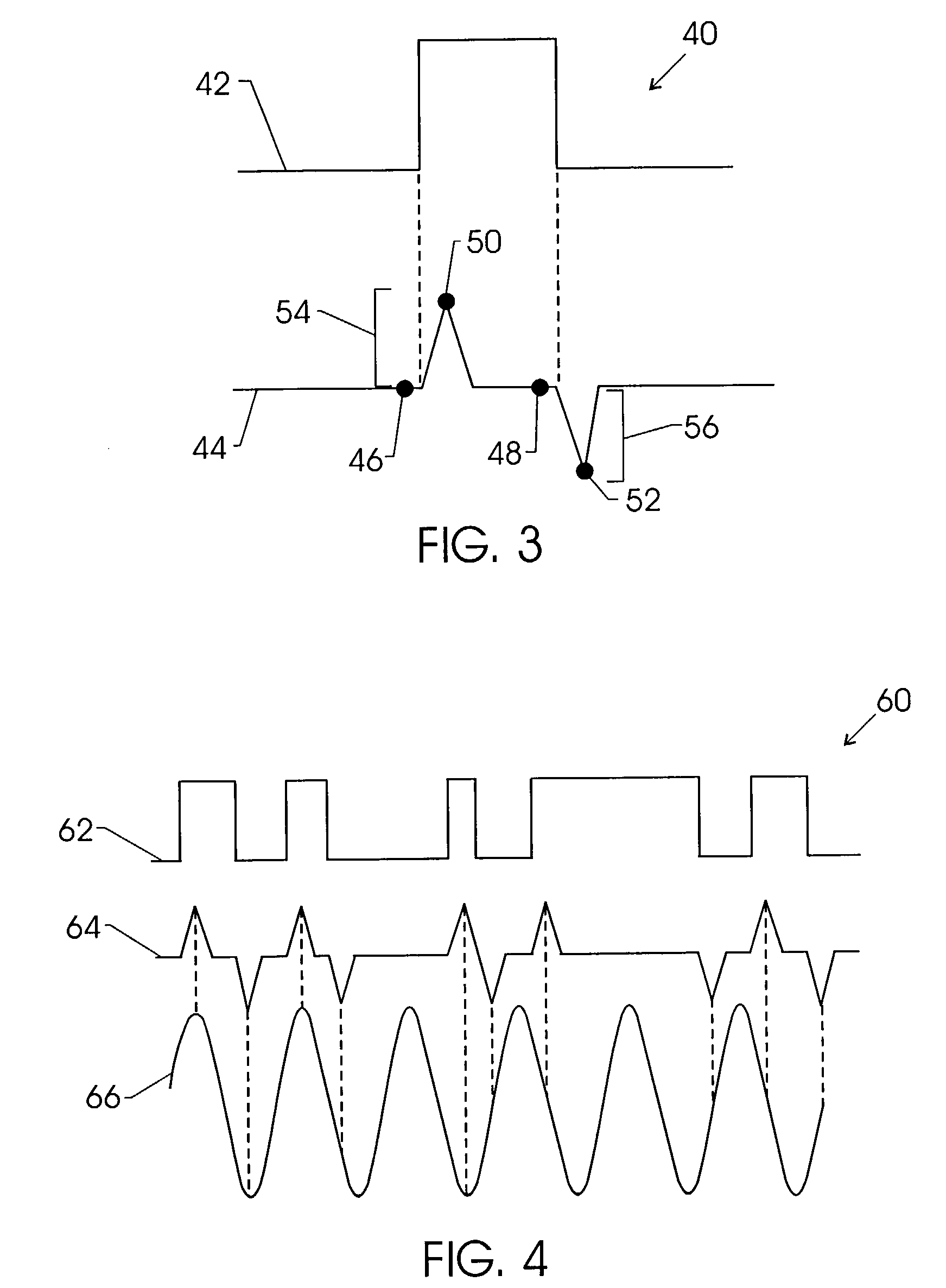Method and apparatus for providing a switching signal in the presence of noise
a switching signal and signal technology, applied in the field of providing a switching signal in the presence of noise, can solve the problems of operator fatigue, prone to false actuation of sources, faulty operation of the presence sensing device, etc., to improve noise immunity, reduce noise sensitivity, and reliably detect the presence or absence of an object
- Summary
- Abstract
- Description
- Claims
- Application Information
AI Technical Summary
Benefits of technology
Problems solved by technology
Method used
Image
Examples
Embodiment Construction
[0021]The present inventors have recognized that electrical noise may be periodic and thus may cause the noise reduction by averaging method to fail. For example, a noise signal may be a sine wave and the phase of it can line up with sample acquisition times of the presence sensor device. Previous attempts to resolve this problem, such as use of frequency domain analysis of the noise, required excessive processor memory and slowed sensor response time. The present invention overcomes the problem of periodic noise coinciding with periodic sample times by deliberately randomizing the sample times. This forces the noise to look like random noise even if it starts out periodic because the periodic noise randomly adds to the individual sample values. Over time the noise should have a zero mean value, and because of the sample-time randomization, the noise is averaged out relatively faster. Sensor reaction time is improved because lower numbers of samples are required for the averaging me...
PUM
 Login to View More
Login to View More Abstract
Description
Claims
Application Information
 Login to View More
Login to View More - R&D
- Intellectual Property
- Life Sciences
- Materials
- Tech Scout
- Unparalleled Data Quality
- Higher Quality Content
- 60% Fewer Hallucinations
Browse by: Latest US Patents, China's latest patents, Technical Efficacy Thesaurus, Application Domain, Technology Topic, Popular Technical Reports.
© 2025 PatSnap. All rights reserved.Legal|Privacy policy|Modern Slavery Act Transparency Statement|Sitemap|About US| Contact US: help@patsnap.com



